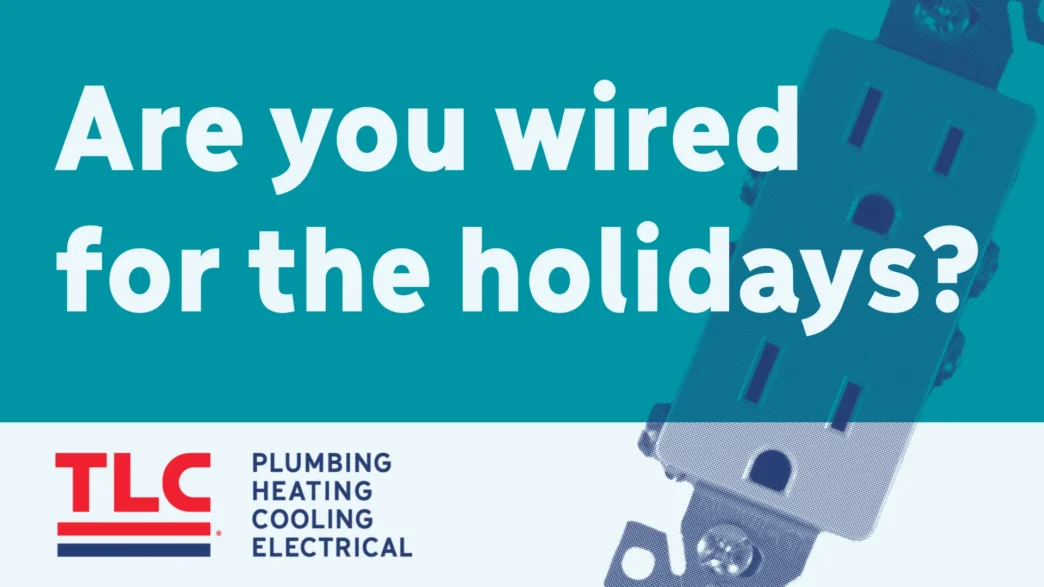It’s officially that time of year again! We’re in full swing of the holiday season, which means that people across New Mexico will brave ladders to hang their festive lights for the whole neighborhood to see. Before you begin, it’s important to know all the safety precautions you should take in order to protect your family and home against some of the potential hazards that are associated with your holiday lights. According to the National Fire Protection Association (NFPA), U.S fire departments responded to an average of 800 home fires that started with decorations (excluding Christmas trees) between 2012-2016!
Following these five tips for a smart holiday light set-up will ensure you’re protected against potential disasters.
1. Make the Switch to LED Christmas Lights
If you’re still using incandescent light bulbs, you should seriously consider making the switch to LED lights for several reasons. Not only do LED help save you money on your electric bill, but they’re also safer to use. You can easily find out if you have LEDs by looking at the label on the cord. Here are some of the perks of LEDs:
- They use 75% less energy
- They don’t run in a series, so if one goes out, it won’t cause the entire string of lights to go out.
- They last 10x longer and are more durable
2. Inspect the Cords and Bulbs Before-Hand
Before you go through the trouble of hanging up a bunch of lights, you’ll want to inspect the cords of the lights and any extension cords you’ll be using to make sure there are no frays, cuts or defective wiring. You’ll also want to inspect the plug to see if the prongs have been damaged. This can cause arcs in the circuits and is a fire hazard. If you do find a defective wire, you may be tempted to fix it by using electrical tape. We recommend against this, because again, this only increases your fire risk.
3. Use the Right Type of Cords & Lights
It’s pretty straightforward: use outdoor-rated lights and extension cords for outside and indoor-rated lights for inside. The lights usually have this information on the outside of the package before you buy them. If you already have some and are unsure, you can check the tag on the cord to confirm. You’ll also want to be sure you’re using the right type of extension cords. Similarly to the lights, there are also indoor/outdoor extension cords.
Additionally, it’s ideal to use Ground-Fault Current Interrupter (GFCI) outlets, especially for outside lights. These are a special type of electrical outlet that are installed in areas where there is a risk of electricity meeting water (i.e. outside, in the kitchen or bathrooms). Electricians recommend GFCI outlets because they react faster than fuses or circuit breakers. These type of outlets help prevent serious electric shock, electric fires and prevent damage to appliances. If you’re not sure if you have a GFCI outlet or not, you can purchase a GFCI tester from your local home improvement store for about $10. For homeowners who find they do not have an outdoor GFCI outlet, installing one of these is not a major project, but should still be left to a licensed electrician.
4. Smart Set-Up & Installation
After you’ve taken the necessary steps to ensure you’re using the right equipment, you’ll want to carefully and strategically install your lights. Here is a short checklist of things to think about when you’re setting up your lights for worry-free decorating:
- Be careful of trip hazards. If a cord is in a main walking area, tape it down. It’s best to put the cords in a place where there is low foot traffic or off to the side and against a wall.
- Do not install lights on trees that are in contact with power lines
- Do not hang up your lights in an area close to heat or water
- Do not attached light strings with nails or staples
- Take down exterior lights within 90 days
- Do not exceed the maximum wattage rating of the lights or your outlet
5. Get a Timer
You go through a lot of work to get your holiday lights up and if you’re a Christmas enthusiast, you probably take a lot of pride in your holiday displays. The last thing you want is to go through all the trouble of putting up your lights only to forget to turn them on! Or even worse, you forget to turn them off and then you’re paying a ton for electricity for the month of December. A timer helps with safety, especially if you’re not using LEDs. Incandescent bulbs produce heat and can become a fire hazard if they’re left on too long. You also reduce your shock risk from plugging/unplugging the lights. Not to mention, there’s the convenience factor. Don’t even worry about your lights when you use a timer.
Some timers come with multiple outlets, giving you the flexibility of plugging in multiple strings of lights. While that’s great, be sure you do not exceed the maximum wattage of the timer. Depending on how many lights you have, you may need to get a couple different timers.
Follow these five tips for a safe light set-up and rest easy this holiday season knowing that your house and family are safe from the potential dangers that often come with a holiday light masterpiece. If you need help or have any questions about electrical issues, you can ask our professionals. We hope you have a wonderful holiday season!

